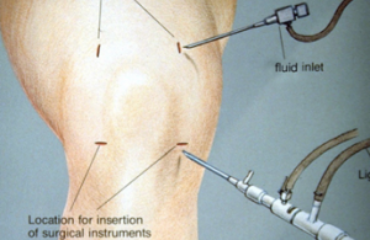A broken ankle (or a fractured ankle) can vary from a simple break in one bone to several fractures. There may be associated damage to ligaments and other soft tissue as well.
Types of Ankle fractures
Ankle fractures are classified according to the area of bone that is broken. A fracture at the end of the fibula is called a lateral malleolus fracture, or if both the tibia and fibula are broken, it is called a bimalleolar fracture.
What causes Ankle fractures?
Trauma is the primary cause of ankle fractures. It can be due to twisting, rolling or rotating the ankle, tripping or falling or automobile accidents.
These must be differentiated from a severe ankle sprain, which can feel the same as a broken ankle.
Symptoms
- Immediate and severe pain
- Swelling
- Bruising
- Tenderness
Inability to bear weight - Deformity

Diagnosis
After the physical exam, X-ray imaging is performed for further evaluation. If further evaluation is needed, CT scan can be performed and it is especially useful when the fracture extends into the ankle joint. MRI provides high-resolution images of both bones and soft tissues, like ligaments.
Treatment
- Nonsurgical Treatment – Surgery is not required if the ankle is stable. A stress x-ray may be done to see if the ankle is stable. The type of treatment required may also be based on where the bone is broken.
The fracture may be protected with high-top tennis shoe to a short leg cast. Weight-bearing could be immediate or delayed for 6 weeks. - Surgical Treatment – If the fracture is out of place or your ankle is unstable, surgery may be required. The fractured bone fragments are first repositioned into their normal alignment and fixated with screws and plates.
Recovery
Depending on the person’s age, health and the nature of injury, there is also a wide range of how people heal after their injury. It takes at least 6 weeks for the broken bones to heal. It may take longer for the involved ligaments and tendons to heal.
During the recovery period, bone healing is monitored with repeated x-rays.
Pain Management
Opioids, non-steroidal anti-inflammatory drugs (NSAIDs), and local anesthetics can be considered for pain relief depending on the severity of pain. Opioids are generally avoided due to their side effects and addiction potential.
Rehabilitation
- Physical therapy – is very important. It may take several months of strengthening exercises for the muscles around the ankle to get strong enough for you to walk without a limp and to return to your regular activities.
- Weight-bearing – The specific nature of injury and type of fracture determines when you can start putting weight on the ankle.
- Supports – Initially, most ankle fractures are placed in a splint to protect the ankle and allow for the swelling to go down. After that, a cast or removable brace can be placed for several months as needed.
Although most people return to normal daily (non-sports) activities within 3 to 4 months, some people can still be recovering up to 2 years after their ankle fractures. It may take several months for one to stop limping while you walk, or before one can return to sports or laborious work. Most people return to driving within 9 to 12 weeks from the time they were injured.


